© 2014-

TV Noordzee (2)
Having achieved the launch of their radio station and in the process generating a considerable amount of interest and press publicity the backers set about fulfilling their main objective, the opening of an offshore commercial television service. 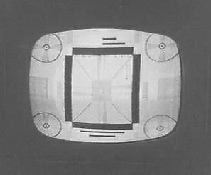
Television test transmissions, under the call sign TV Noordzee, started on 15th August 1964 at 6.30pm on channel E11, directed at a primary reception area which contained an estimated 750,000 television sets. Reception reports were received from over 100 miles inland and a public opinion poll carried ou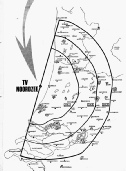 t at the end of August 1964 showed that one third of all Dutch households owning a television set within the reception area had tuned into TV Noordzee at some time during the first week of test transmissions.
t at the end of August 1964 showed that one third of all Dutch households owning a television set within the reception area had tuned into TV Noordzee at some time during the first week of test transmissions.
Regular television broadcasts started officially on 1st September 1964 at 6.30pm. The first commercial broadcast was for Johnson's Pledge furniture polish and other advertisers on that first night including Macleans toothpaste, Brylcreem hairdressing cream and Dubonnet wine, as well as some products from major Dutch-
Joe Brandel, who had experience working on television in America was the station's General Manager and Lloyd Williams Associates, a London based agency, advised on programme buying.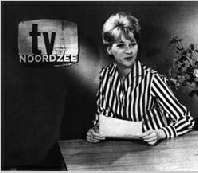 Consequently a lot of English language programmes were purchased from the United States and England, including series such as The Invisible Man, Danger Man, Robin Hood, The Saint, Super Car, Mr. Ed, The Bob Cummings Show, My Three Sons, Victory at Sea, Ben Casey and Rin Tin Tin.
Consequently a lot of English language programmes were purchased from the United States and England, including series such as The Invisible Man, Danger Man, Robin Hood, The Saint, Super Car, Mr. Ed, The Bob Cummings Show, My Three Sons, Victory at Sea, Ben Casey and Rin Tin Tin.
Commercials were recorded on 16mm cine film and spliced into the programmes (which were also obtained from distributors on cine film) in the land-
As an incentive to buy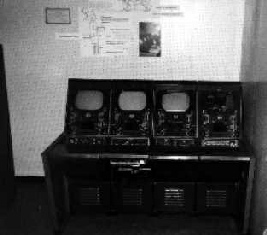 airtime on the new, unfamiliar commercial television station advertisers were given an introductory 33% discount on the published ratecard rates which varied between £600 and £900 per minute. Even with these discounts advertising revenue for TV Noordzee was said to have been in excess of £100,000 during the first full month of broadcasting. Although such discounts were available on airtime booked until May 1965, it was estimated from the respo
airtime on the new, unfamiliar commercial television station advertisers were given an introductory 33% discount on the published ratecard rates which varied between £600 and £900 per minute. Even with these discounts advertising revenue for TV Noordzee was said to have been in excess of £100,000 during the first full month of broadcasting. Although such discounts were available on airtime booked until May 1965, it was estimated from the respo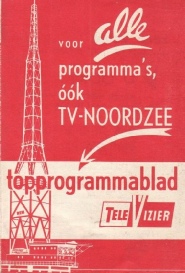 nse received to the initial broadcasts that the operation would be profitable within a year -
nse received to the initial broadcasts that the operation would be profitable within a year -
Government Action
The Dutch Government, which since 1960 had been remarkably tolerant of Radio Veronica's broadcasts, took an entirely different view about the new, more powerful television and radio station located on the REM Island. They were furious that such a powerful broadcaster could establish what appeared to be a permanent base off the coast and beam programmes to millions of Dutch homes. Although Radio Noordzee and TV Noordzee programmes were confined to entertainment the Government really feared that the REM Island transmitter, or another similar operation, could be used for political propaganda purposes.
The main argument was not over the existence of a commercial television service -
On 16th September 1964 the Lower House of the Dutch Parliament, the States General, began to discuss the situation and the following day it was decided by 114 votes to 19 to introduce legislation which would bring the artificial island within Dutch territorial limits.
In order to achieve this objective the Government proposed to rely on the 1958 United Nations Geneva Convention, which defined the limits of a 'continental shelf' over which coastal states could exercise sovereignty. Under this Convention a country could extend its boundaries out to sea for a distance of up to 200 miles, relying on the extent to which the submerged landmass ('continental shelf') adjoining the coast projected seawards. Any physical structure supported by part of the sea-
By first ratifying the 1958 Geneva Convention (to which Holland was not even an original signatory) and then enacting its own legislation -
The Dutch Minister of Justice, Dr. Scholten, said he hoped the REM organisation would voluntarily cease broadcasting once the Bill became law. Speaking in the same debate the Minister of Education, Arts and Sciences, Dr. T Bot, promised a radical alteration of the Dutch radio and television services, possibly involving the introduction of advertising and allowing private companies to establish stations.

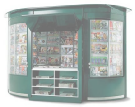

Click on picture to enlarge
TV Noordzee test card
TV Noordzee projected reception area
Click to enlarge
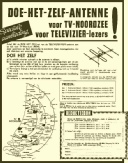
In order to receive transmissions from TV Noordzee it was necessary for viewers to buy a new aerial.
This is a press advert for an aerial capable of picking up the offshore transmissions.
(Thanks to Hans Knot)
TV Noordzee announcer Hetty Bennink on air.
(Photo: Hans Knot)
TV Noordzee control room
(Photo: Hans Knot)
A short film about TV Noordzee and REM Island
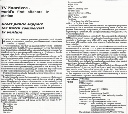
Television Mail
21st August 1964




Floor 2
Back to




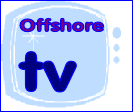


Poster advertising TV programme listing magazine
Courtesy Hans Knot
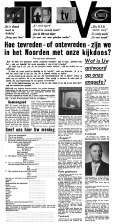
Nieuwsblad van het Noorden
26th September 1964
Courtesy Hans Knot